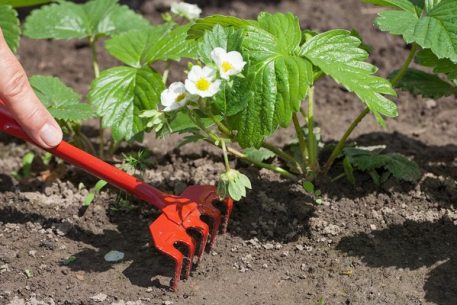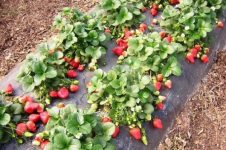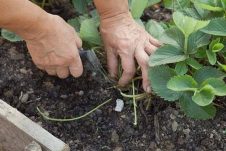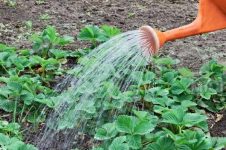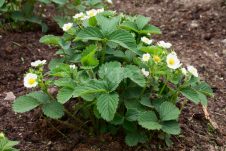To collect a generous harvest of berries, it is necessary to organize competent care for strawberries during flowering and fruiting, as well as after its collection. Gardeners often neglect the basic rules of cultivation, and as a result, they collect very few berries.
Material Content:
The nuances of growing strawberries
When growing berries, it is important to remember that rosettes that bear fruit for three consecutive years should be removed. The fact is that after three years of age, the berries certainly begin to grow smaller, and the yield becomes very poor. In addition, over the years, strawberries become susceptible to various diseases.
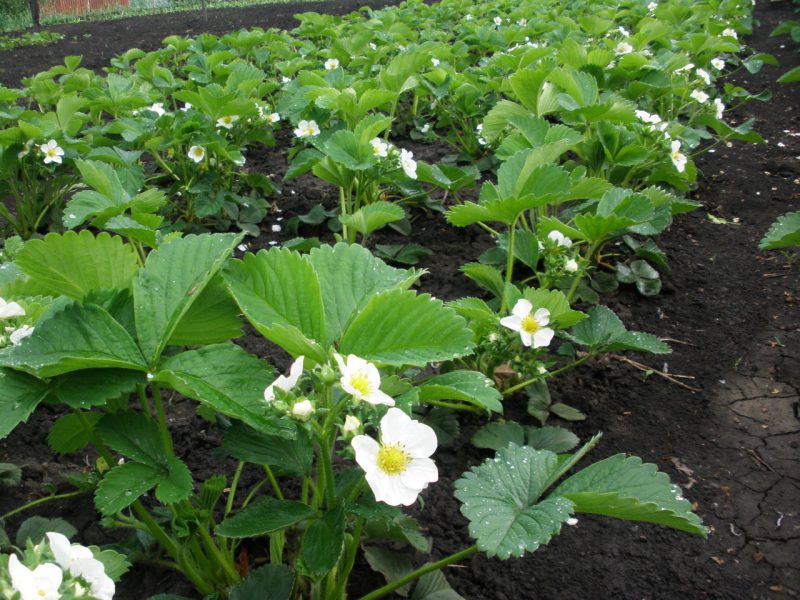
If the goal is to collect as many berries as possible, then the mustache that gives the outlet should be trimmed. If this is not done, then the strawberry yield will be low.
If you need to get planting material, then young outlets are taken only from annual bushes, on which there are 5-7 well-developed leaves.
Many gardeners grow strawberries in seedlings in greenhouses. For breeding a berry through seedlings, work begins in February.
And finally, the main rule - when growing this berry, it is important to observe the correct planting patterns, and not to reduce the distance between the bushes in order to save the area of the site.
Then the yields of berries will be high.
Tips and tricks for caring for strawberries
Of course, it is very important to observe the agricultural technology of growing plants, so that the outlet gives as many berries as possible.
During flowering
When flowering, you need to surround the strawberries with care in order to get more fragrant, large berries.During flowering, rosettes spend all their energy on forcing buds and ripening berries. Therefore, it is important at this moment to make the necessary nutrition. Care for strawberries in the spring is, first of all, watering and necessarily feeding.
This berry needs to be added three times per season - at the beginning of growth, then during flowering, and then after harvest. The most important top dressing for outlets is precisely during flowering. It is recommended to introduce complex mineral formulations.
Mineral mixtures are applied only once!
During flowering, strawberries are fertilized with foliar top dressing. For this, it is best to use boric acid, 1 g of which is diluted in 10 liters of water. The bushes are simply sprayed. This helps to increase the number of ovaries.
During flowering, it is important to keep the area clean. Strawberries do not like the weed neighborhood. It is also necessary to loosen the soil after each watering so that the air easily passes to the roots. Watering the berries should be plentiful, not allowing the soil to dry completely.
During fruiting
Mandatory watering during ripening and picking berries. The optimal flow rate is 2-3 buckets per square. Outlets during the fruiting period consume a lot of moisture, therefore, it is impossible to allow the soil to dry out.
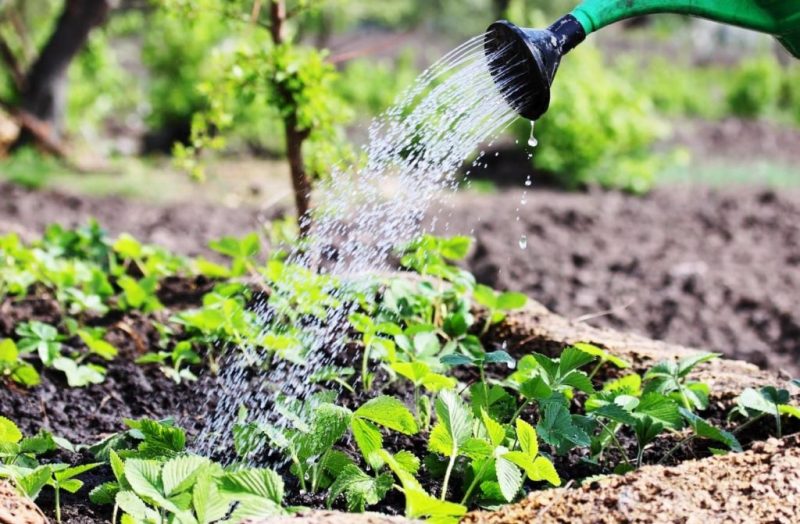
It is necessary to ensure that strawberries do not get sick. You can understand that a plant is sick by its leaves. During the ripening period, do not use chemistry. Remove diseased specimens from the site by digging with the root.
When the berries ripen, it is advisable to mulch the planting site so that the fruits do not lie on damp ground. To do this, many use straw, because it is not for nothing that strawberries are also called "strawberries." Rotting berries must be removed so that the rot does not spread to healthy fruits.
During fruiting, it is very good to feed strawberries with mullein. To prepare a nutrient solution, part of the mullein is diluted in 5 parts of water, the solution is insisted for a week. Then the finished solution is diluted 1:10 with water and added to each outlet. The main thing is that the fertilizer does not fall on the berries.
After harvest
After harvesting, strawberry care consists of preparing plantings for winter and replanting bushes. Plants, giving berries, become very weakened, and therefore they should be abundantly watered, fertilized, and trimmed.
After the harvest, berry care is, first of all, plentiful, but not frequent watering. The bushes need to be shed very well so that the earthen lump deep around the roots becomes wet.
Also, bushes need nutrients. In August or already in September, chicken manure or horse manure is closed up in the beds. You can also use mullein infusion. Mineral mixtures are also useful, but in very small quantities.
After gathering, they feed the sockets only once - this will be enough so that the berry plants quickly regain their strength and leave for the winter.
Also, at the end of the season and in the fall, you definitely need to remove all dried leaves and trim the mustache. If it is not planned to expand the landings, then all mustaches are cut off. If you leave the antennae on sockets, they will weaken the bush, and the yield will decrease. In addition, young outlets will very thicken the landing.
After the collection, preventive measures are also taken to prevent the development of diseases and the appearance of pests in the beds. You can treat the bushes with a special preparation, such as Nitrofen. If strawberries are affected by powdery mildew, which happens often, then it should be treated additionally with Topaz.
At the end of the season, the bushes are again sprayed, for example, with “Karbofos” in order to prevent the appearance of insects.
How to prepare strawberries for wintering
In preparation for wintering, in addition to abundant watering and preventive measures and pruning, each bush should be mulched to protect it from frost. Do it in the fall.Of course, the best shelter for wintering outlets is snow. But if there is a little snowy winter, then the plants may simply die. Therefore, additional beds are covered with special artificial materials or natural components.

Great shelter is the needles. The needles do not get wet. And mice do not settle in it. You can also cover the bed with straw, sawdust or fallen leaves. If for the winter strawberries will be covered with artificial material such as spanbond, then it must be laid on arcs. The fact is that when plants come into contact with artificial material, they can freeze.
They begin strawberry shelter events with the first frosts. Such a late shelter helps the strawberries to harden, and then it will more easily tolerate subzero temperatures in winter.
Secrets to Getting a Good Harvest
To take a good harvest of berries for a long time on your site, you first need to plant several different varieties with different ripening dates. Experienced gardeners plant up to 6 varieties of strawberries of different durations. There are universal varieties that bear fruit throughout the summer or yield twice a season.
Strawberries are very fond of moisture, so mulching helps not only to grow clean berries, but also to keep the soil around the roots moist for a long time. An excellent mulch is a needle that also repels insect pests.
Young bushes should be removed buds to give them the opportunity to build a strong root system and grow.
Features of care depending on the variety of strawberries
Growing strawberries is a painstaking work, and when growing different varieties, there are rules for leaving.
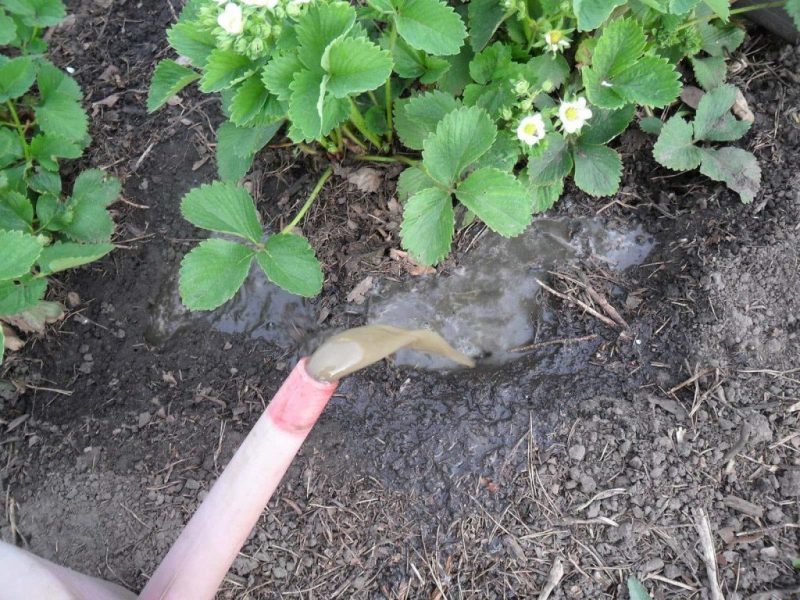
So, the maintenance of maintenance strawberries is somewhat different from the care of other varieties, and the main difference is in the application of fertilizing.
In order for the repairing varieties to bear fruit constantly, they should be fed very often. Moreover, top dressing begins to make only after the collection of the first berries. The next top dressing is carried out after the appearance of new peduncles and so on.
Moreover, the leaves of the repairing varieties after fruiting are not removed. Only the diseased parts of the plant are removed.
You must also consider if you decide to grow strawberries with continuous fruiting, that after three years the bushes will have to be thrown away. Planting of such varieties must be updated every three years, otherwise the yield will drop sharply.
When growing any variety, it is worth considering that strawberries do not tolerate moisture stagnation at all. Therefore, if in warm time it needs abundant watering, with the onset of the first cooling, the amount of moisture should be drastically reduced. In winter, strawberries do not tolerate excess moisture.
In cold regions, such varieties are planted in the spring so that they have time to take root, and are covered with agrofiber for the winter. When grown in a greenhouse, it is better to plant repairing varieties in the autumn. In warm regions, strawberry planting is preferable in the autumn season.


